#Biester Palace
Text

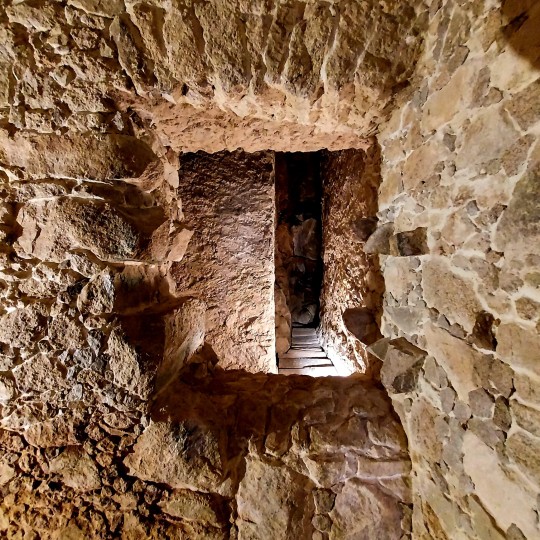
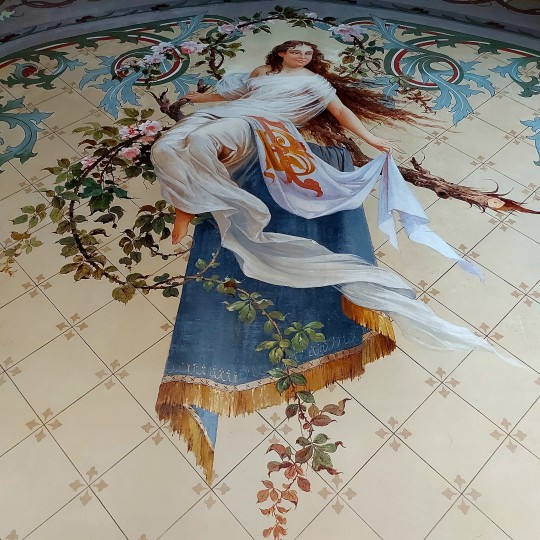
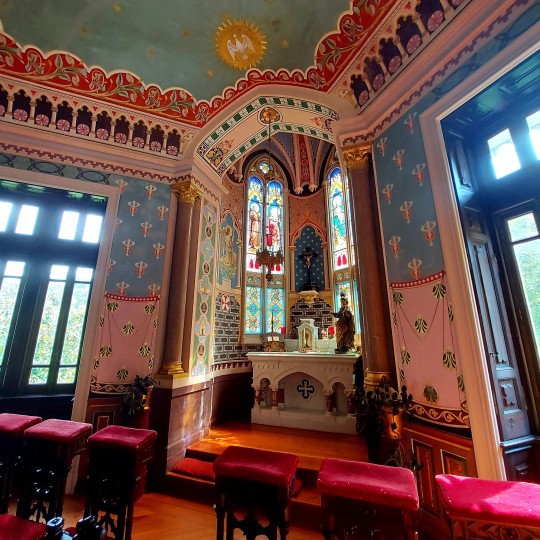
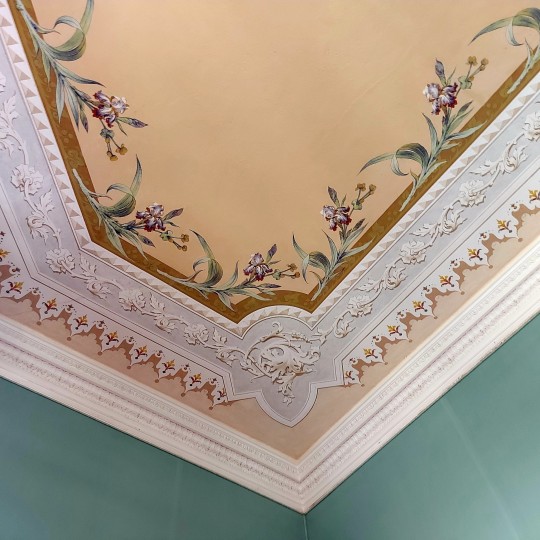


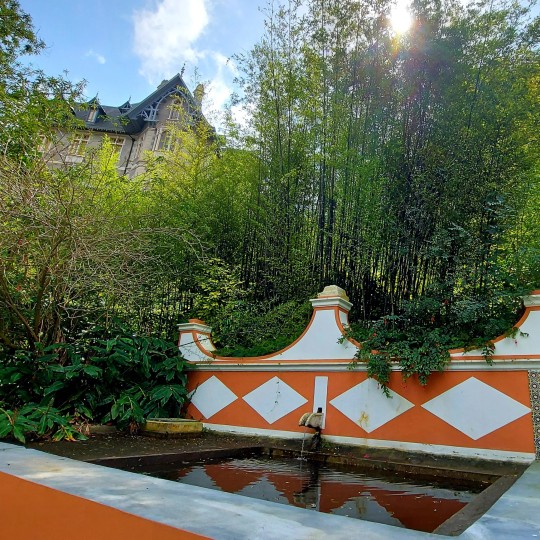
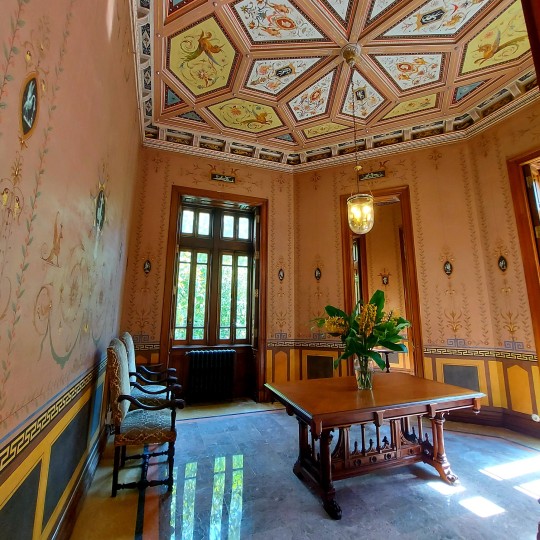
Biester Palace, Sintra
13 notes
·
View notes
Text
Top 10…or 12 Haunted Sites visited in 2023
The most amazing, unique, creepy (and simply coolest) haunted places we visited around the world in 2023.
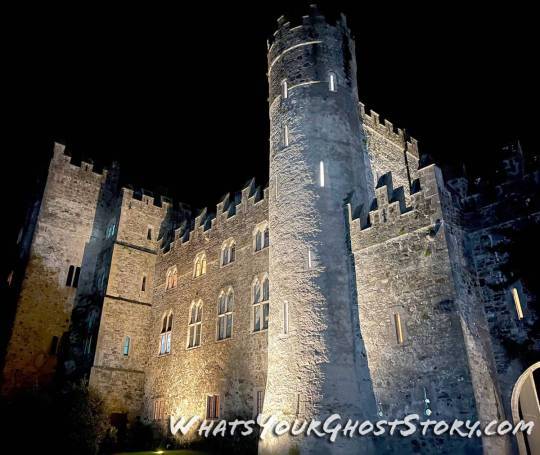
View On WordPress
#Biester Palace#cairn#castle hackett#cemetery#Culver City#Culver Studios#Edgerton#erie street cemetery#Fae and fairies#fairies#fairy legends#Galena#Galena Cellars#galway#ghost#Ghost Adventures#haunted#hellfire club#hollywood#hollywood toys and costume#Initiation Well#Ireland#J.J. Bowles#joc-o-sot#Kilkea Castle#Knights Templar#knockma hill#Lake House Inn#Limerick#Los Angeles
1 note
·
View note
Text
We spent Friday with a tour company that likes to go off the beaten path, called We Hate Tourism Tours (we’ve learned that the Portuguese have a very sarcastic sense of humor). They took us to the Mountains of Sintra and beach dunes of Cascais, sites of Portuguese royalty escapism during historical hardships.
We were two of six on the tour group, but the other 4 wanted an exclusive tour in German without any pesky English. So they split us up and we spent the entire day with our tour guide, Mannu, handcrafting a personalized tour.

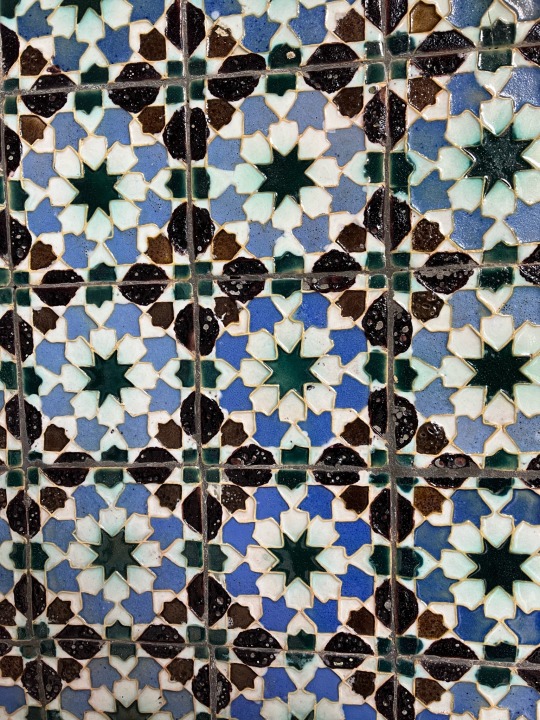
In the mountains we visited Miradouro de Santa Eufémia, Sintra National Palace, Palace and Park Biester (Cat will add a part 2 with more pictures from the palace), and Palace and Park Montserrate. The mountain would naturally be bare granite, but it's ideal climate encouraged the Portuguese to plant forests of pine trees (lumber for Portuguese ships) and cork trees (cork for wine bottles). The palaces of Sintra were royal retreats especially during the hot summer months and the Castle of the Moors (the right most red arrow below) still stands from the 700s.
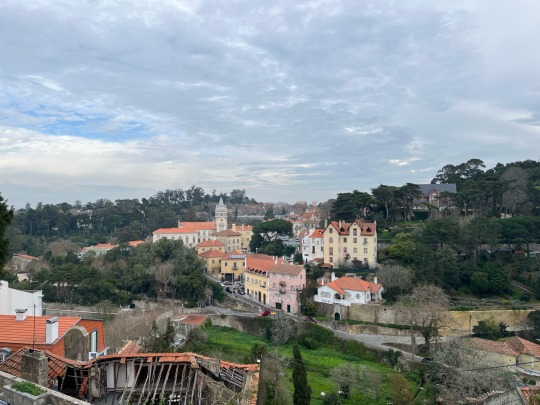
Mannu took us to Pão Saloio (roughly translated to Hillbilly Bread) for a classic rural lunch of breads, chorizo, pork belly, cheese, olives, and tomatoes and Cat was introduced to Green Wine - wine made with grapes that are not fully ripened due to the weather conditions of Portugal. We knew it was going to be good when we saw a group of police officers hanging around smoking and having their coffees.
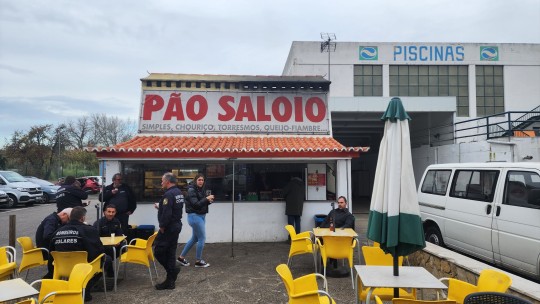
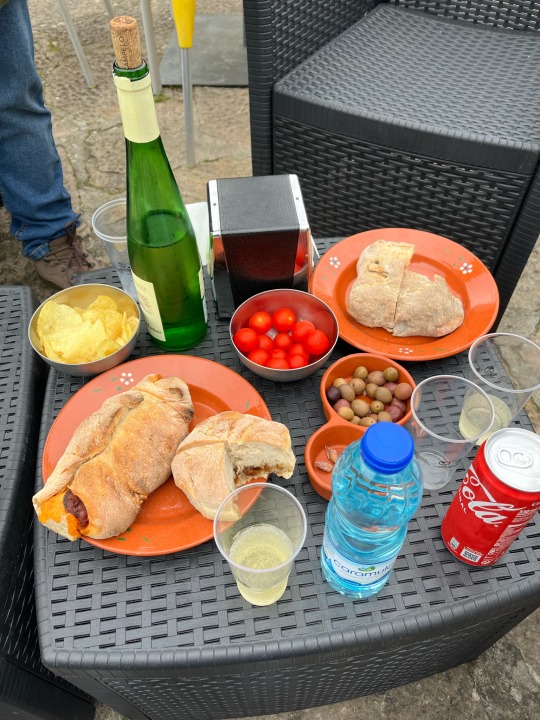
Our last stop on the mountain was the western most point of continental Europe, Farol do Cabo da Roca (the left most red arrow below and pictured below).


We made it way down to the beachy dunes of Cascais. Cascais was a retreat for some King I forget the name of who sought to get away from the throngs of people following him all the time so he went to the village or fishermen as he thought the smell would keep the bourgeois away...
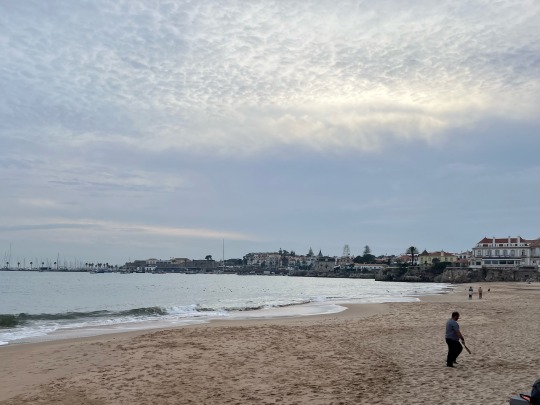
After many stops admiring the waves (Mannu was a surfer and could not believe the conditions on the day), we circled back to Lisbon where we had a lovely dinner of tempura green beans, steak, cod, clam rice, truffle mashed potatoes and another glass of green wine for Cat. I struggled to stay awake during dinner, so Cat only made two pit stops for shopping as we walked back to our airbnb.
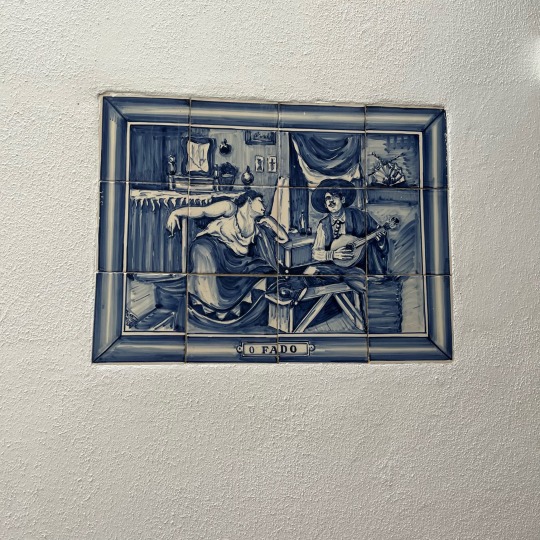

I was asleep by 8 :)
3 notes
·
View notes
Note
disseste que talvez seja uma péssima ideia ir ao palácio da pena nesta altura do campeonato. sabes de outros monumentos ou palácios que sejam bonitos ou interessantes de visitar? my boyfriend is a history-slut and i've taken him to mafra palace last year, so i'm thinking of taking him elsewhere this summer, maybe in late august or early september
antes de mais vou ser bue sincera com todos voces, quando mudam de lingua assim eu nao sei como reagir nem em que lingua falar mas vou responder em portugues
Sugiro o que já sugeri: queluz, mafra e o palacio nacional de sintra. Ainda em sintra tens o Palacio Biester que abriu ha um ano e é muito bonito, o convento dos capuchos, a villa sassetti e monserrate. nao costumam encher mas ainda assim eu ia ao dia de semana e da parte da manhã
mas atençao que agosto e setembro sao meses confusos. setembro é o pior... escolhe bem o dia da semana
7 notes
·
View notes
Photo


Reaching the top of this miradouro at Biester Palace is truly a moment I will never forget. This place is pure magic and romance - a real life fairy tale.
My Photos: July 2022
4 notes
·
View notes
Text



3 distinct views from the same window
Biester Palace, Sintra
June 7, 2022
2 notes
·
View notes
Photo

In addition to the terraces with unique views over the city, on the first floor of the palace, the neo-Gothic chapel is the main highlight. This room, marked by the strong colors of the stained glass windows, distinguishes paintings by the Frenchman Paul Baudry on the ceiling and is strongly linked to the legacy left by the Knights Templar in Sintra. Still within the theme of spirituality, on the lower floor of the Biester there is a division that is surprising for being inside such a luxurious building: the Initiatic Chamber. This small corner built entirely of stone and inspired by the shrines of the ancient city of Jerusalem - which inspired modesty - contrasts with the richness of the Templar chapel. Outside, there is a long way to go in the nature of Sintra between greenhouses, lakes, waterfalls, a tea house, a viewpoint and the Gruta da Pena. The beauty of the palace "extends from the inside out", with a natural park that complements the architecture of the place, "in the heart of Sintra's nature". Parque Biester, designed by landscaper François Nogré, is arranged on a slope and has different levels that offer privileged views of the Moorish Castle, Quinta da Regaleira and the city of Sintra, always having the palace as a backdrop. The park also has a wide variety of exotic species: "Camel trees from China and Japan, green and red beeches from Central Europe, Acacias from Australia and North American firs". https://www.instagram.com/p/CdWQcCljCFw/?igshid=NGJjMDIxMWI=
2 notes
·
View notes
Text
Visit to Sintra - 14th September 2023
We were taken outside Lisbon to Sintra which was used as a retreat for the Royal family when Portugal still had a monarchy. We visited the National Palace:

This side of the palace was built in the 16th Century. We did a tour of the palace. There were rooms with ornate ceiling like this one with swans:
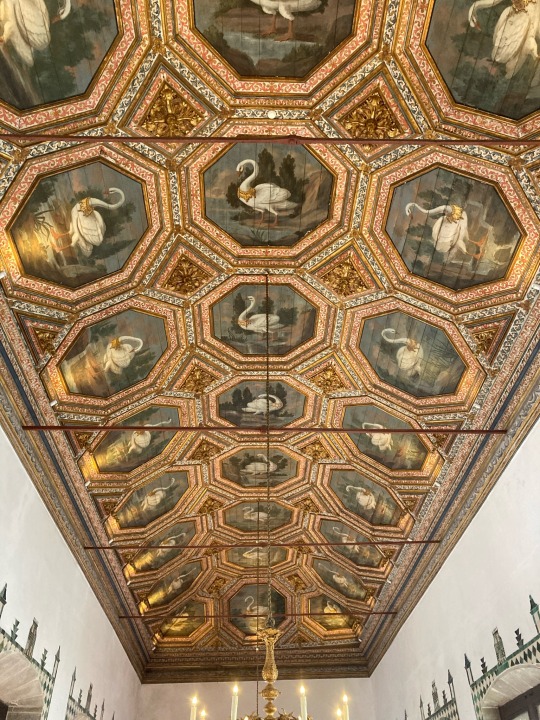
This was a photo from the “Coat of Arms Room” ceiling with a wooden coffered dome decorated with 72 coats of arms:

We saw fully furnished rooms and in this case the walls have tiling too:

There also some external courtyards:

We then decided to visit the Biester Palace with extensive gardens:

We toured around the house and walked around the gardens. We got a great view of the ancient castle above the palace :
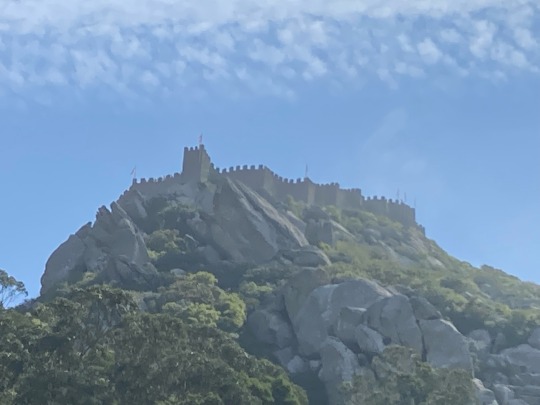
There was also an excellent view across the town to the National Palace:
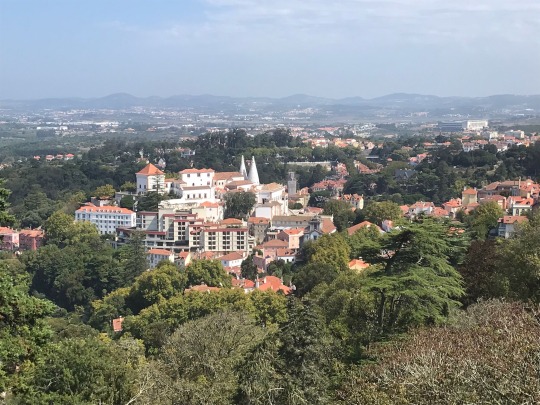
We returned to Lisbon and visited the Calouste Gulbenkian Museum:
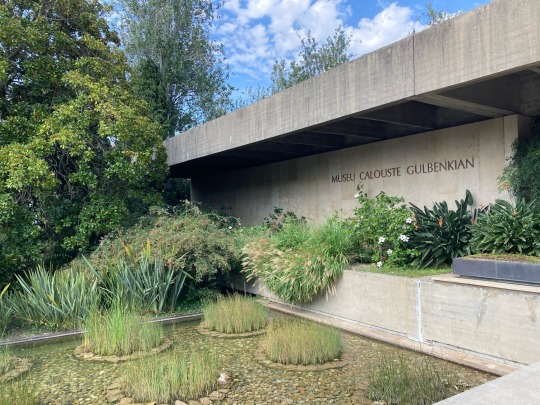
This museum houses a private collection of a wide range of art work, porcelain, jewellery and sculpture.
In the evening we took the metro and then the tram up to a high point in Lisbon to see views across the city at sunset. We went to the interesting Time Out market for an evening meal:

1 note
·
View note
Text
Biester - Biester Palace
"Biester - Biester Palace" https://www.biester.pt/o-biester
1 note
·
View note
Photo
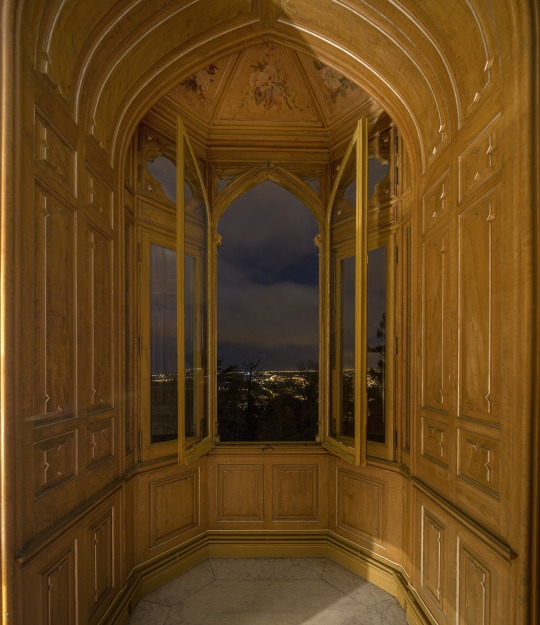
Biester Palace, Sintra, Portugal
#art#design#inteiors#interiordesign#palace#sintra#portugal#biester palace#luxury houses#luxury homes#luxurylifestyle#history#style#countryhouse#nightview
3K notes
·
View notes
Text
Haunted Ireland & Portugal - keeping up spooky globetrotting on Instagram
A quick photo gallery look back at our stops in haunted Ireland and Portugal.
I love updating this site, but when we’re out and about, the best way to keep up with posts from the field is by following our instagram page. Some of these posts have more than one image in them – Just click over to our IG page to see everything. If you haven’t been keeping up to date, here are the posts you’ve missed:
Ireland:
Just checked off a massive location from…
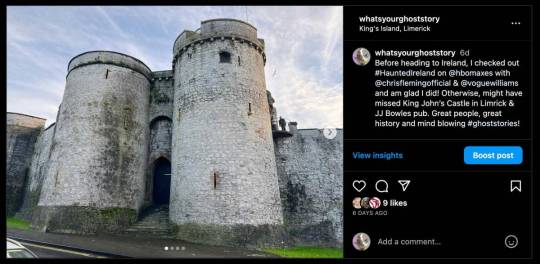
View On WordPress
#athgreany#Biester Palace#castlehackett#dublin#haunted#hellfire club#Ireland#King John&039;s Castle#knockma hill#piper&039;s stones#portugal#Sao Bento Train Station#stone circles#Torre de Belem
1 note
·
View note
Text
Part 2 - photos of Palace and Park Biester
The palace was built in 1880 to be the residence of Ernesto Biester (a wealthy 19th-century merchant and playwright). Its conical roofs and neo-gothic windows face the road that goes up the mountain to Pena Palace. It was also the setting for "The Ninth Gate", a film by Roman Polanski starring Johnny Depp.
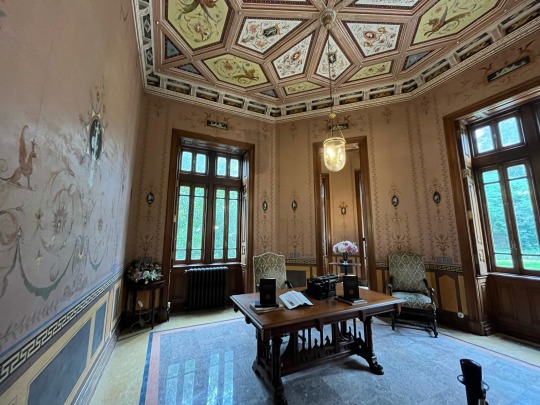
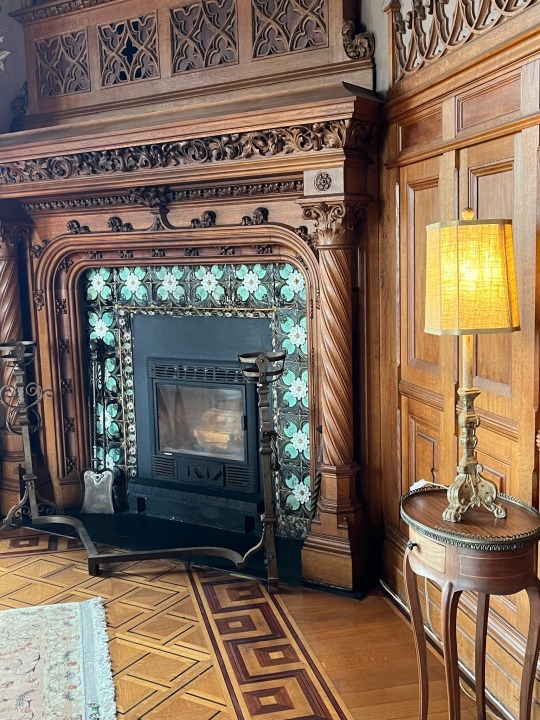
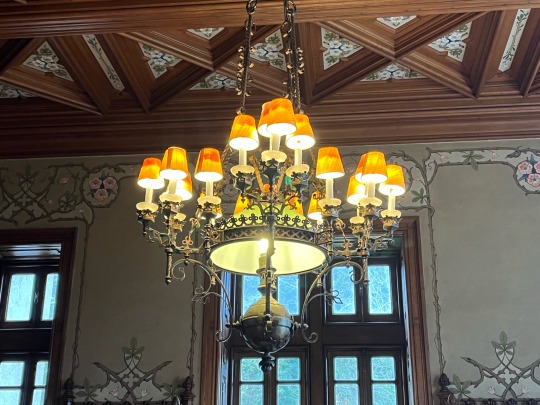
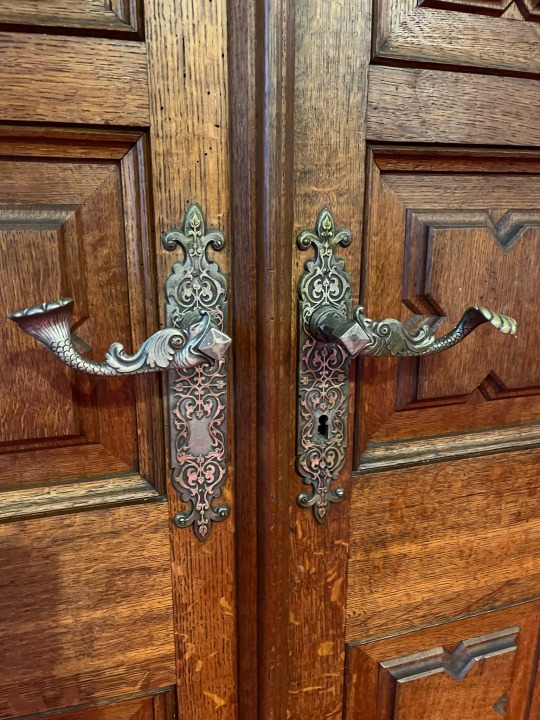
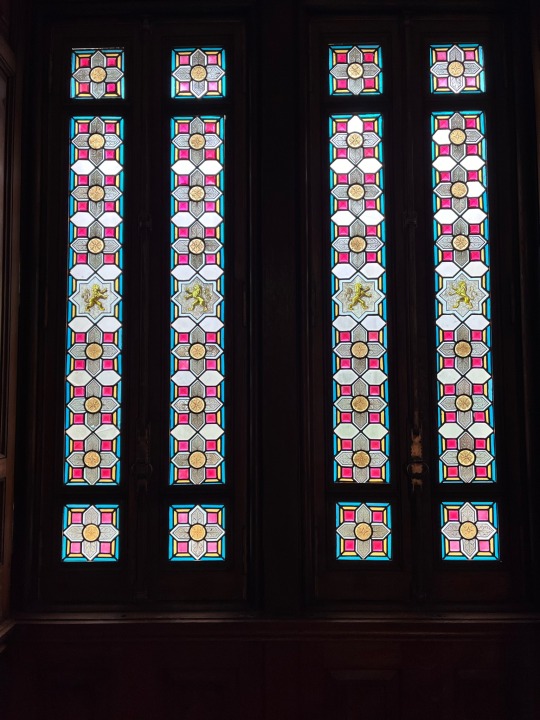
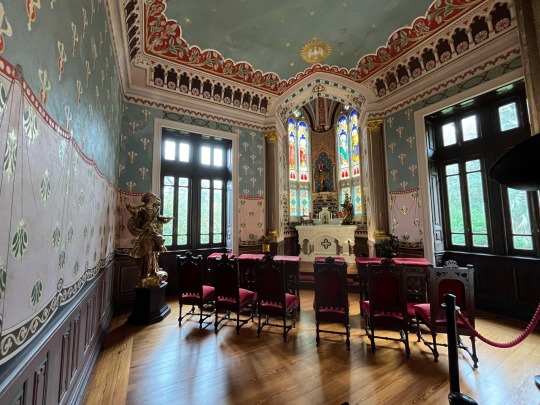
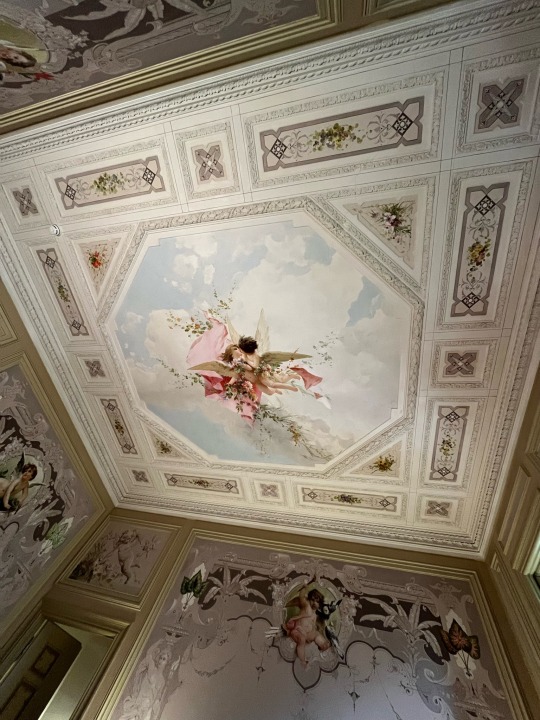
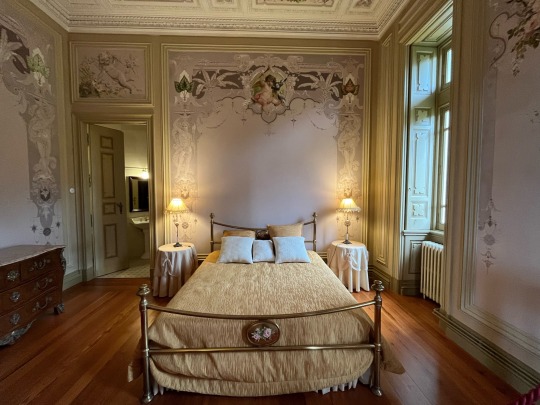
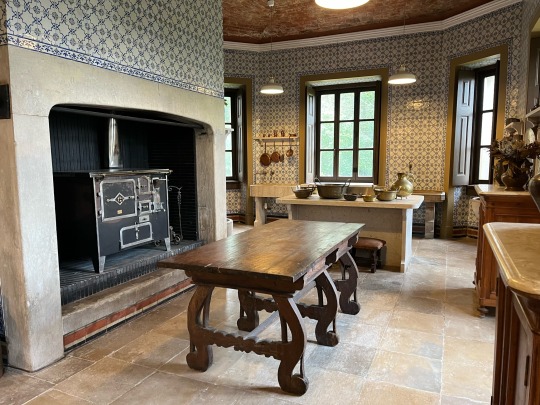
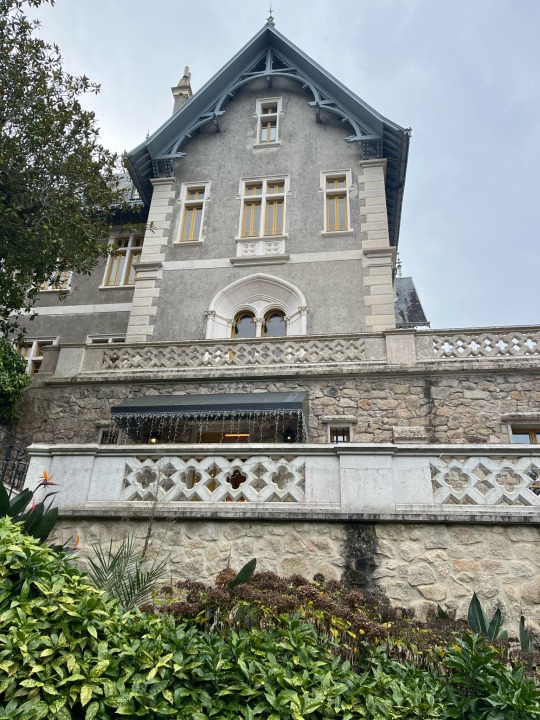
0 notes
Quote
O Palace Hotel é uma edificação neomanuelina, construída entre 1888, ano da aprovação do projeto de Luigi Manini, e 1907.
Já depois da Extinção das Ordens Religiosas, D. Maria Pia pretendeu criar neste espaço um palácio real, que rivalizasse com a Pena, mas os planos acabaram por não se concretizar e o então Ministro das Obras Públicas, Emídio Navarro, muito ligado ao Bussaco, propôs a construção de um palácio do Povo, ou seja, um hotel (ANACLETO, 2004, p.66). Para tal, encarregou o cenógrafo Luigi Manini, que terminou as primeiras aguarelas em 1886. O plano foi aprovado em 1888 e as obras tiveram início ainda nesse ano. A antiga igreja, em torno da qual se encontravam as primitivas celas, foi conservada no seio do novo edifício, bem como algumas das estruturas conventuais. Manini inspirou-se na Torre de Belém e no Claustro dos Mosteiro de Santa Maria de Belém, para criar no Buçaco uma obra que não pode ser considerada apenas como um neo, mas sim como uma recriação eclética que denota aspetos historicistas, mas pouco relacionados com o retorno ao passado ou a ideias românticas (ANACLETO, 2004, p.66).
Salientam-se ainda alguns dos nomes ligados a esta grandiosa obra, como foram os arquitetos Nicola Bigaglia, José Alexandre Soares e Manuel Joaquim Norte Júnior, este último responsável, em 1905, pelo projeto da denominada Casa dos Brasões. A partir de 1903, foram contratados diversos artistas para decorar os interiores do Hotel, entre os quais se encontram os pintores António Ramalho, Carlos Reis, João Vaz, o pintor de azulejo Jorge Colaço (que executou, entre outros, os painéis do vestíbulo, alusivos à Batalha do Buçaco), e o escultor Costa Motta Sobrinho, responsável pelos grupos escultóricos da Via Sacra.
Luigi Manini (1948 – 1936)
Luigi Manini, cenógrafo no Teatro Scala de Milão, chega a Portugal em 1879 para ocupar o cargo de cenógrafo do Teatro de São Carlos. Em 1888, contava quarenta anos, Emídio Navarro convida-o a projetar um palacete de caça para a família real, a construir na serra do Buçaco. Manini projetou um palácio em estilo neomanuelino. O Palácio do Buçaco deu trabalho a outros artistas, como Norte Júnior e Nicola Bigaglia, este de origem veneziana, que executaram as pinturas decorativas, e o escultor J. Machado. Nesta obra teve especial relevo o contributo da Escola Livre das Artes do Desenho de Coimbra, donde provinham os mestres canteiros que trabalharam no Bussaco.
Outra obra emblemática de Luigi Manini em Portugal é a Quinta da Regaleira, em Sintra, cujo projeto teve início em 1904.
Para além das obras já mencionadas, Manini concebeu o Challet Mayer, a Vila Sassetti, e a casa do jardineiro da Quinta Biester, atualmente designada Vila Relógio, em Sintra. Em 1913, Manini regressa a Itália, falecendo em Brescia a 29 de Junho de 1936, com 88 anos de idade.
Norte Júnior (1878 – 1962)
Assina a Casa dos Brasões do Palace Hotel do Bussaco.
Das suas obras mais conhecidas destacam-se o Teatro Variedades, o Café Nicola e a Villa Sousa, em Lisboa e o Palace Hotel da Curia. Foi o recipiente de 5 Prémios Valmor.
Nicola Bigaglia (1841-1908)
Assina a Casa dos Cedros do Palace Hotel do Bussaco
Nicola Bigaglia, um prestigiado arquiteto veneziano, radicou-se em Portugal em 1888, com o intuito de vir dar aulas de Modelação Ornamental na Escola Afonso Domingues.
Recebeu um Prémio Valmor pelo Palácio Lima Mayer, em lisboa, tendo também assinado o Palácio Lambertini, e o Palácio Val Flor, ambos em Lisboa.
Azulejos do Bussaco
Foi – e ainda é – vasto e rico o património do Bussaco. De todo ele, a azulejaria merece lugar de destaque, por se tratar de uma arte das mais populares e mais genuinamente portuguesa, mas sobretudo porque se encontra aqui representada, em qualidade e até em diversidade, em dois períodos distintos.
- os frontais de altar, produção do segundo e do terceiro quartel do século XVII, aplicado na igreja e nas construções adjacentes, bem como nas capelinhas semeadas na mata e que terão sido provenientes de Talavera de la Reina, com os que estão na capela do Ecce Homo e nas capelas devocionais de S. João da Cruz, S. Pedro e Sta. Maria Madalena e, ainda, os frontais (de ramagens) da igreja e do claustro e os das capelas de S. João no Deserto e de S. José. Note-se, no entanto, que a importância do Deserto do Buçaco no “corpus” da azulejaria nacional, desta época não resulta da monumentalidade ou das grandes superfícies azulejadas. Bem pelo contrário, o lugar de grande relevo que indiscutivelmente lhe é reconhecido, advém-lhe de para aqui terem vindo – e em grande parte, ainda se conservarem, “ os mais representativos painéis para frontais e altares em Portugal”, como escreveu Santos Simões, considerando que se trata de “ um núcleo sui géneris e paradigmático”. De facto, apesar da destruição e abandono a que o deserto foi votado pelo século XIX (desde a batalha de 1810 e com a extinção das ordens religiosas) como pelo século XX ( até com a construção do palácio), chegou ao nosso tempo uma boa dezena e meia de frontais, para além de existirem, nas cercanias do Bussaco, restos diversos, reaplicados ou não, que devem ser identificados com este conjunto.
- azulejaria “historicista e nacionalista” no Palace Hotel, da autoria de Jorge Colaço, como os “dez painéis de inspiração camoniana”, nas janelas-portais da galeria nas alas nascente e norte, e no extremo sul; os painéis do “hall” de entrada e do vão da escadaria, sobre temas da Guerra Peninsular e da Batalha do Bussaco, ou da epopeia marítima dos portugueses, com três cenas da partida para a Índia, – a conquista de Ceuta e a tomada de Goa, no interior;
Nos últimos anos do século XIX e primeiros do século XX, afirmaram-se novos rumos para o azulejo, de que o Palácio da Pena (Sintra) e o Palace Hotel do Buçaco podem ser exemplos, este, mais historicista e acentuadamente nacionalista, onde os azuis e brancos são predominantes, com fortes incursões arte-nova, particularmente em cercaduras de belo efeito cromático.
Amaro Neves,1992
0 notes
Text
Portugal Ghost Stories, Haunted Locations & Beliefs - a preview video
I just had the trip of my life, which took me through Portugal.... Lisbon, Porto, the Douro Valley, Braga & Sintra. There is going to be so much content coming, but for the time being, please enjoy a short preview video of what will be to come.
I just had the trip of my life, which took me through Portugal…. Lisbon, Porto, the Douro Valley, Braga & Sintra. There is going to be so much content coming, but for the time being, please enjoy a short preview video of what will be to come, which will include an installment of “Haunted Filming Locations.” So much history, so many great views, amazing places & wonderful people (and food and…
youtube
View On WordPress
1 note
·
View note
Photo
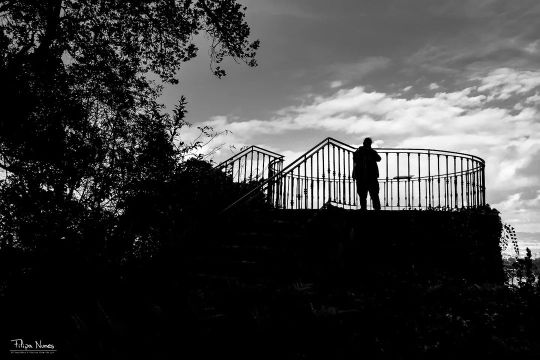
New places in the heart of the land #Monochrome #Architecture #Cloud #Sky #Silhouette #Tree #Outdoors #Railing #Plant #Darkness #podium_mono #raw_bnw (at Biester Palace) https://www.instagram.com/p/CjGqRTiM73p/?igshid=NGJjMDIxMWI=
#monochrome#architecture#cloud#sky#silhouette#tree#outdoors#railing#plant#darkness#podium_mono#raw_bnw
0 notes
Photo
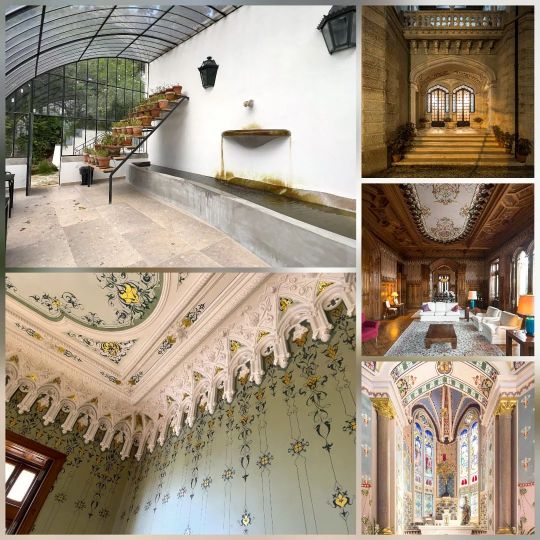
From Sintra to Hollywood, the wealth of the palace is not indifferent to anyone. The chalet was already a star in 1999, when it was chosen by director Roman Polanski to film some scenes for Thriller The Ninth Door, starring Johnny Depp, Lena Olin and Frank Langella. "Art offers us the only possibility to fulfill life's most legitimate desire, which is not to be completely erased by death." It is with this phrase by Eça de Queirós that Abílio Lobato dos Santos, administrator of the chalet, recalls the importance of the Palace for the Cultural Heritage of Portugal, in his first presentation to the public. The administrator considers that his mission "couldn't be any other" than "to make known this palace built by people and designed for people, who are interested in it". "Although built as a personal residence, Biester was conceived as a space to receive and to exhibit. Everything was made for the human eye and sensibility. Keeping this space inaccessible to the public would, in my view, deprive it of one of the most beautiful properties of Sintra's heritage", he reveals. Now open to the public, every day of the week (from 10 am to 8 pm, summer time), tickets to visit Palácio Biester, on Estrada da Pena, range from 10 euros for adults and five euros for children and seniors. https://www.instagram.com/p/CdWQlw8DMTw/?igshid=NGJjMDIxMWI=
0 notes